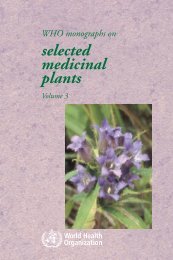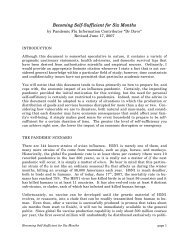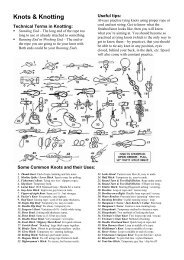You also want an ePaper? Increase the reach of your titles
YUMPU automatically turns print PDFs into web optimized ePapers that Google loves.
COMMON EDIBLE MUSHROOMS<br />
tainty all the specimens gathered for eating, and to look up their<br />
edibility in a standard text. Never eat those about whose identity<br />
there is even the slightest doubt.<br />
How to Identify Them<br />
Many kinds of edible fungi like morels, shaggymanes, inky<br />
caps, puffballs, the sulphur shelf fungus, the cone fungus, the<br />
Jew's ear, and a host of others can be recognized by the general<br />
shape, size, and color alone. Once you have studied the actual<br />
specimens, or even good pictures of them, you can recognize<br />
them anywhere. For this reason you should become familiar with<br />
the pictures and descriptions in this book before you go fungus<br />
hunting.<br />
To identify some species of gill fungi, however, you need to<br />
know whether there is a sheath or cup around the base of the<br />
stem, or a veil extending from the stem to the edge of the halfexpanded<br />
cap, as it does in the cultivated kinds you buy in the<br />
store. You must observe whether the gills come up close to the<br />
stem but do not touch it or are attached to it or run a short way<br />
down the stem. In many cases this means that to be sure of your<br />
fungus you need not only a single specimen but several, in various<br />
stages of development. (See Diagram i.) The characters that<br />
distinguish certain kinds are present at only one stage of growth<br />
and unless you find specimens in this stage you cannot be certain<br />
of their identity. For this reason even experienced amateur and<br />
professional mycologists find many single mushrooms about<br />
whose identity they are in doubt. If they are gathering fungi to<br />
eat and not to study, they leave these doubtful ones in the woods.<br />
You will find many mushrooms that are not described in this<br />
book, but unless you know them well, leave them alone! Never<br />
eat a fungus that you do not know with absolute certainty.<br />
Spore color is one of the simplest aids in the identification of<br />
mushrooms with gills. To determine the color of the spores it is<br />
necessary to make a spore print (Diagram 2), though deposits<br />
of spores are sometimes found on the leaves or grass beneath the<br />
12
















